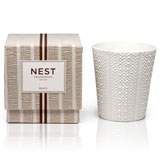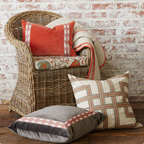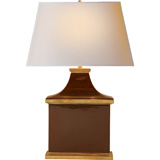Save to...
Is it OK to use chlorine bleach or fabric softener when I wash my fine linens?
No. Chlorine bleach will cause fading and discoloration. In addition, it will break down and permanently weaken cotton and linen fibers. If necessary, we recommend using an oxygen-based bleach or better yet, a solution specially formulated to clean fine linens, such as Le Blanc’s Linen Wash.
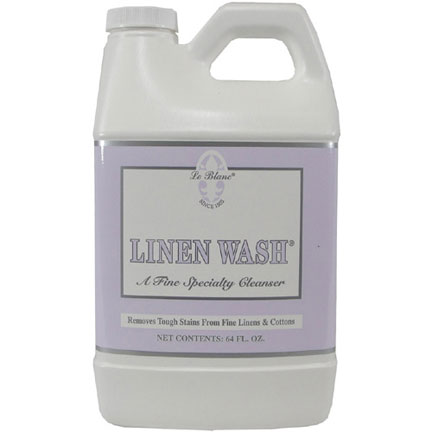
Fabric softener is designed to coat fibers in oils, waxes and fragrances that might make the fabric feel soft, but the build-up of chemicals can damage the fabric over time. In addition, fabric softeners clog the pores of Egyptian cotton sheets, preventing them from breathing and decreasing the luster and gloss of the appearance. High quality Egyptian cotton linens do not need to be treated with fabric softener and, actually, with repeated washings and dryings, become softer naturally.
To view our Fabric Care selection, please click here.
Instant Makeover: Art at Your Feet
This dining room from the Winter 2013 issue of California Home + Design looks like a work of art. It features vintage Gio Ponti chairs, wall art made from 1970’s fabric design, and even a Tony Duquette Sunburst chandelier that was literally assembled one spear at a time:

But am I the only one who thinks “Better not touch anything here”? A good room should not just be a museum, but a place where people feel comfortable. The right rug could do exactly that for this dining room: Enhance the decor of the room, while letting you kick off your shoes and savor the wine, dessert, and company.
For example, Dash & Albert’s Icelandia Grey Hand Knotted Wool Rug is made from a soft tufted wool and has subtle gradations of grey to channel the modern and sophisticated look of the room:
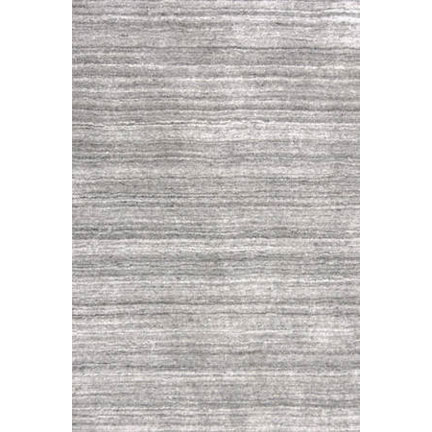
This Safavieh rug by David Easton has a geometric pattern and colors that play with the pattern and tones of the art on the wall:
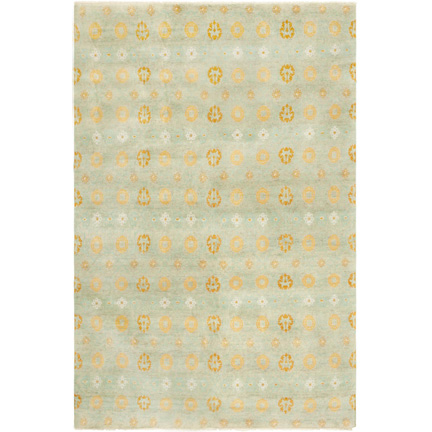
Finally, a Safavieh Oushak rug, like this one, could balance the room’s modernism with warmth and history:
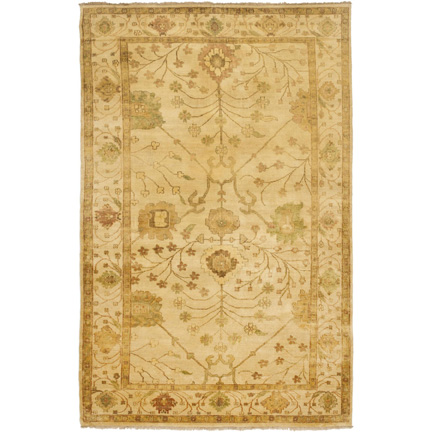
Submit a suggestion for an Instant Makeover by commenting below or tweeting us @GraciousStyle.
Seth and Jenna’s Guest Room
Part 2 of Seth and Jenna’s Guest Room.
Jenna: Good morning, Mrs. —
Sharon: Please call me Sharon, dear.
Jenna: OK. Good morning, Sharon. How did you sleep last night?
Sharon: Oh it was wonderful! Bob was out in about a minute. He just wrapped himself up in that big comforter. He did manage to tell me that those sheets were heaven after 5 hours on a plane before he went out.
Jenna: That’s great. I’m so glad you liked them. Seth got those sheets — he liked how they’re made from bamboo and are good for the environment.
Sharon: Bamboo? Is that right? Bob will get a kick out of that one.
Jenna: And how about yourself?
Sharon: I wrapped up in that orange striped throw and read on my iPad for a while. It was so cozy. Is it cashmere?
Jenna: No, actually it’s alpaca, you know — those mountain animals from Peru? But it really feels like cashmere and keeps warm.
Sharon: Yep, it sure did. And I’m glad you got that rug. Hardwood is so nice to look at, but I’m glad to have a rug under my feet at night. Also so I don’t wake Bob up if I get up.
Jenna: That’s funny. Seth is like that too. One minute he’s out like a log, and the next he’s wide awake.
Sharon: I can’t believe this place. Didn’t you just move in? When did you have time to do all this?
Jenna: Well, it’s been a few months. And Seth helped a lot too–
Sharon: Seth? This is my Seth we’re talking about here?
Seth: Hey mom. What are you two saying about me?
Here’s a look at Seth and Jenna’s guest room:
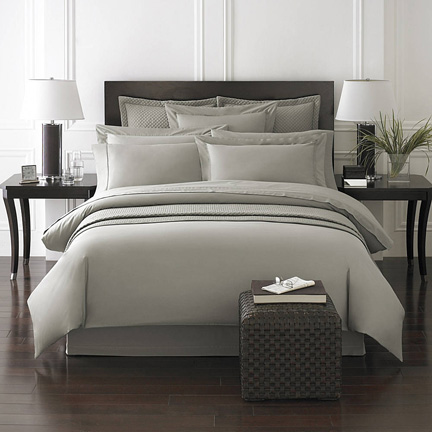
Jenna: We both liked this neutral bedding.
Seth: And I thought the bamboo fabric was pretty cool. It’s actually very soft, and bamboo is a very environmentally responsible raw material.
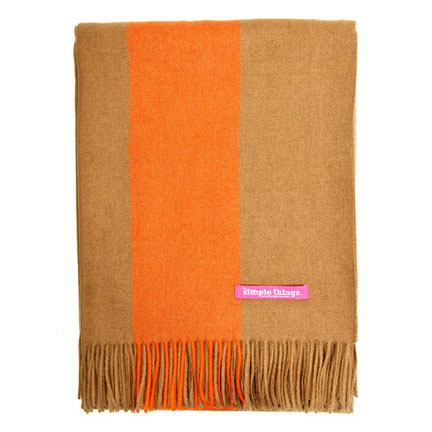
Jenna: This is a great throw: The alpaca wool feels a lot like cashmere, and the color wakes up the room, like “You gotta live a little!”
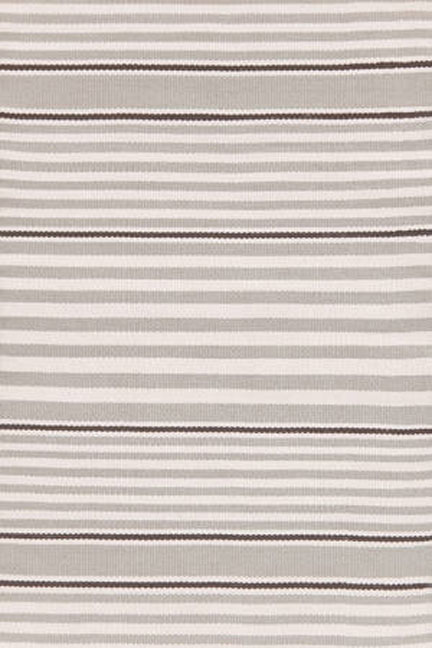
Seth: Here’s the rug we both liked. Jenna’s right — you need a rug over hardwood, or any old thing will wake you up at night.
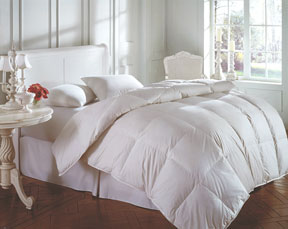
Seth: You got to get a down comforter for those cold nights.
Jenna: Are you really from Wisconsin, Seth?
Seth: Yeah, but I hate cold. Maybe I’ll move to LA one of these days.
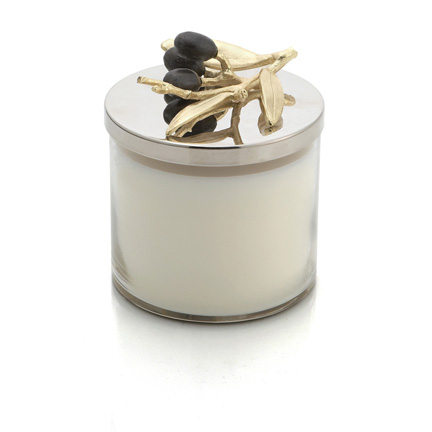
Jenna: OK, I splurged on this candle. But it does make the whole room smell good!
Seth: Yeah, I was pretty skeptical at first, but now I’m really getting to like it too.
Follow Seth and Jenna’s adventures here and on Pinterest.
What is the Difference Between Percale and Sateen?
While both are luxurious and beautiful, percale and sateen fabrics can be distinguished based on the way the fabric is made. Here, our experts at Sferra Brothers explain this subtle difference:
A percale is a plain weave using a use a one-over, one-under structure. The percale’s weave produces a firm and smooth fabric with no gloss.
The sateen’s structure places more threads on the surface, producing the sheen and softer feel. A sateen uses of a different structure in the weaving process, usually a four-over, one-under.
Love the crisp feel of percale, or the soft sheen of sateen? Take a look at some of our favorites in these two sophisticated fabrics:
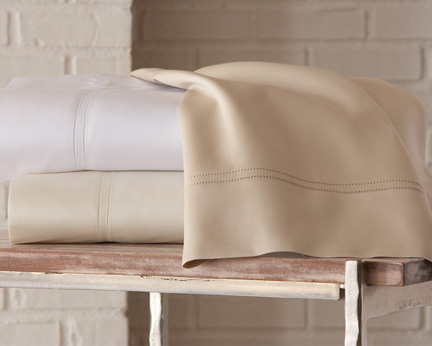
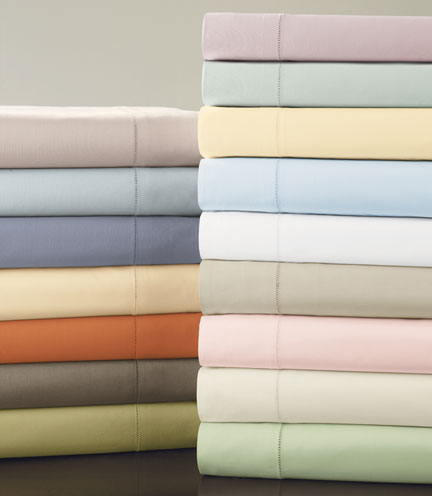
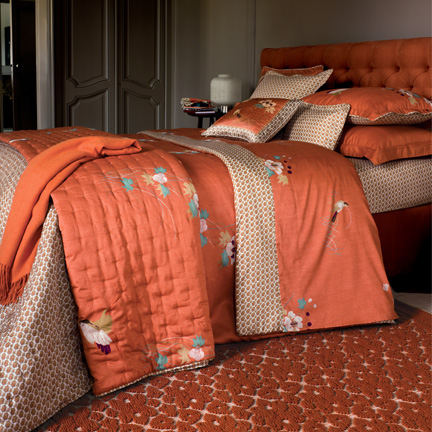
And if you’re looking for the highest thread count linens in each fabric, Sferra offers a 1,020 thread count sateen bedding collection called Milos, and an 800 thread count percale bedding line called Sereno.
To view our entire bedding collection, click here.
We’d love to hear what you prefer: percale or sateen?
Instant Makeover: a Classic yet Modern Table
There’s an amazing house in the December 2013 issue of Veranda magazine:
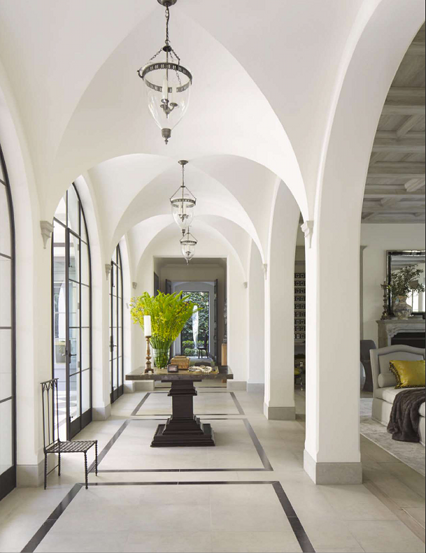
The owners have achieved an almost perfect balance of traditional yet modern design. The columns, cornices, and arches remind us of the Spanish Revival style which are synonymous with California, but the doors, outdoor sculpture, and general brightness of the space make it perfect for today as well.
The dining room of the house strikes the same traditional yet modern balance:
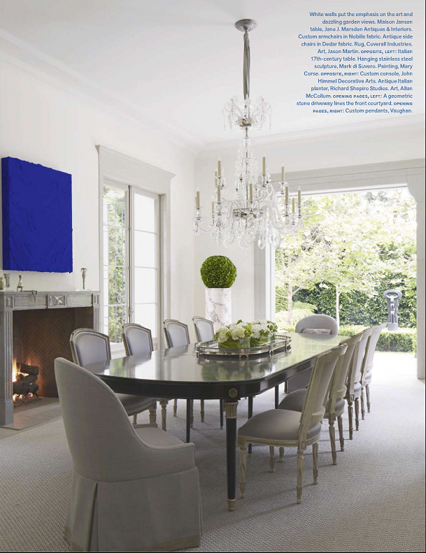
So naturally we ask: How do you set this table so that is equally traditional yet modern, in keeping with the rest of the house?
We propose the Anna Weatherley Indigo Blue dinnerware. Like the house itself, its traditional shape is unadorned in its modern simplicity, and it has an intense indigo blue to match the art:
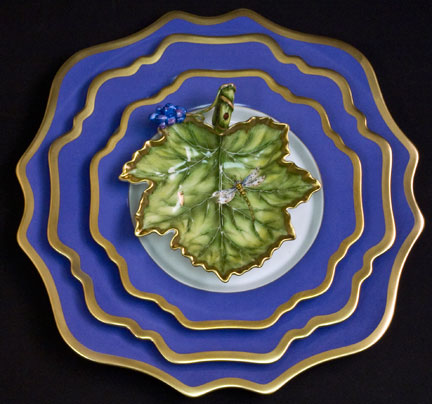
Match it with Alain Saint Joanis’s Arabesque silver-plated flatware, whose Moroccan-inspired handles pay homage to the house’s Spanish Revival roots:
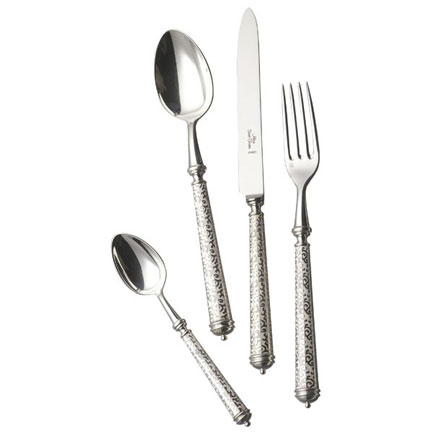
Finally, Varga’s Nouveau Simplicity stemware completes the traditional yet streamlined look, with carved petals inside the cups which echo the arches of the house:
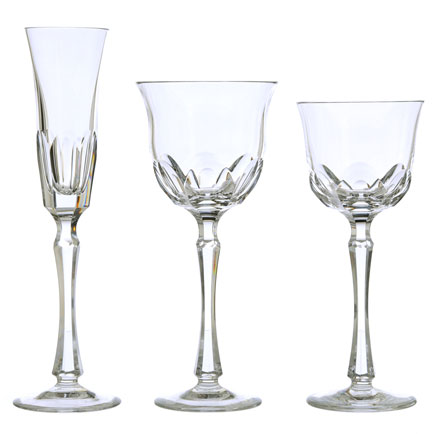
To submit a room for our Instant Makeover, simply post a comment here or tweet us @GraciousStyle
What makes Sferra’s Classico table linens so special?
Classico is one of our best-selling collections, so we asked our friends at Sferra to tell us what makes it so special. Here is what they said:
Classico is our very finest Italian-woven linen. Each piece is finished with a border of delicate, refined, hand-drawn hemstitching – from the 120” seamless round tablecloths, to the 15” octagonal placemats, to the 6” round doilies! Classico’s enduring pure linen fibers only become softer and more lustrous with each laundering. Heirloom linens such as these are always a worthwhile investment, because they will last for generations.
Classico is the quintessential collection for formal dining, as etiquette dictates setting fine — but simple — linens. Colors and patterns are meant for less formal occasions, so for those who like to adhere to tradition, Classico is a true hero. With that in mind, Classico is stocked in the most expansive selection of shapes and sizes to accommodate all occasions — including the extra-long 160” and extra-wide 88” tablecloths.
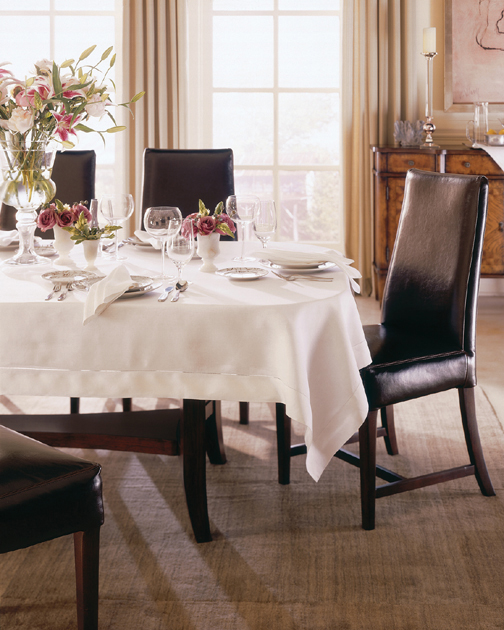
Available in Ecru or White, below is a full listing of the Classico line of table linens:
– Square Tablecloths: 54″ square, 70″ square, 90″ square
– Round Tablecloths: 70″ round, 90″ round, 106″ round, 120″ round
– Rectangular Tablecloths: 66″ x 86″, 66″ x 106″, 66″ x 124″, 66″ x 140″, 66″ x 160″, 88″ x 106″, 88″ x 124″, 88″ x 140″, 88″ x 160″
– Runners: 15″ x 70″, 15″ x 90″, 15” x108″
– Napkins: 6″ doilies, 6” x 6″ cocktail, 6″ x 9″ cocktail, 13” x 13″ tea, 20″ x 20″ dinner, 22″ x 22″ dinner, 24″ x 24″ dinner, 27″ x 27″ buffet
– Placemats: 15″ octagonal, 13″ x 19″ rect, 13″ x 19″ oval, 15″ round
– Guest/Fingertip Towels: 14″ x 20″
To see our entire collection of Sferra linens, please click here.
How to Hang Artwork at the Perfect Height
We’re moving into a new house soon, so to make things go faster on moving day, we set aside a day last weekend and headed over to the new place with all our artwork for a marathon day of picture hanging.
When you’re just hanging one or two pieces, it’s fun to play around with different heights, but when you’re doing an entire house all at once, you need to have a system so you don’t spend all day doing math.

Luckily, there’s an easy way to get this right: The Rule of 58. Simply put, if you make sure that the center of each piece is 58 inches from the floor, your entire space will look cohesive and be hung at eye level: the perfect height that most museums and art galleries use in their displays.

Here is how it’s done:
1) Measure the height of your artwork and divide that by two. On our 30-inch tall piece, this number was 15 inches.
2) Measure the distance between the top of the stretched wire on the back of your piece and the top of your picture frame. In our case, this was 4 inches.
3) Subtract the second number from the first number. Using our numbers above, 15 minus 4 got us 11 inches.
4) Add this number to 58. Install your picture hanger on that mark (58 + 11 = 69), and you’re done!
Try it. You’ll see it’s a breeze …

… and before you know it, you’ll be hanging entire collections like a pro!

Instant Makeover: Company’s Coming!
Company’s coming? Why don’t you update your guest room with these essentials … any of them will make your guests feel pampered.
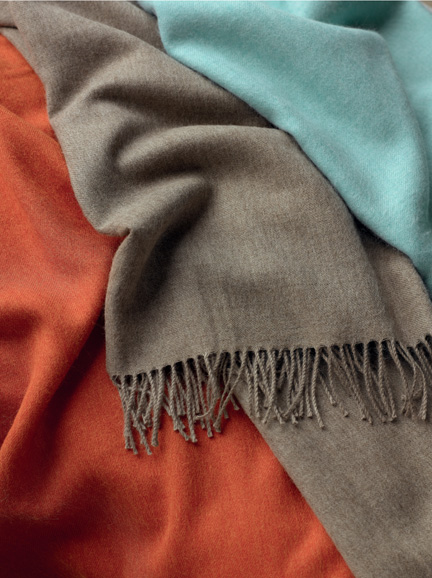
To find more bedding, candles, clocks, hangers, rugs, bath accessories, and lamps, visit GraciousStyle.com.
Designer Tips: How to Decorate with Pillows
Wish you could instantly change the look of a room? Throw pillows are an easy way to transform the way your room looks and make it more comfortable. Here are some tips to give your rooms that designer look:
– To add interest, the fabric on your pillows should be different from the upholstery fabric on your furniture.

– Tightly woven fabrics (like cotton and linen) in similar colors work well in modern environments.

– Velvets, silks, and jacquards look great in classic settings.

– Fringed pillows are a great way to vary the texture on your pillows.
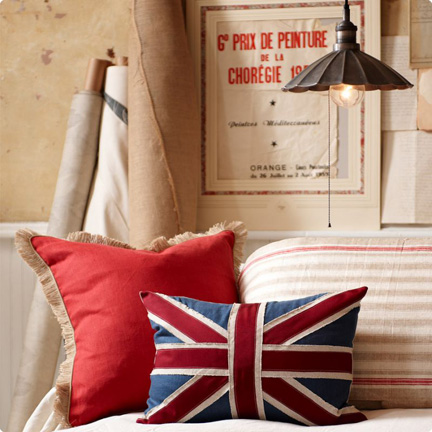
– Choose feather-and-down fillers over polyester fills. They are more comfortable and look more natural.
– Choose an odd number of pillows: three, five, or seven usually work best.

– Select a matching pair of pillows and place them on the outside of your sofa and work your way in. We like 22- inch squares on the outside, and smaller rectangular pillows in the center.
– Choose colors and patterns that complement your decor, but vary the scale and intensity of the designs.

– Use pillows to introduce a pop of new color to your room.
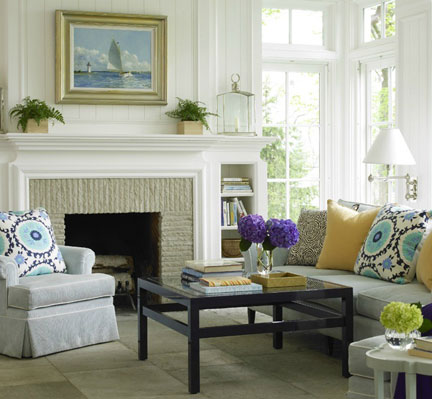
– Use pillows to brighten up darker spaces.

– Use pillows in your bedroom: they add texture and color and they’re great for reading.

– Spice up your outdoors with indoor/outdoor throw pillows.

– Bring your travels home: pillows are great reminders of places you’ve visited …

… or about to visit.

Inspired? Come see our entire collection of throw pillows.
What is the Difference Between Chinese and Japanese Chopsticks?
A chopstick is a chopstick is a chopstick, right? Well, not quite. There are some subtle differences in these two styles that make them better suited to different uses.
Chinese chopsticks are normally squared-off and blunt at the end, which makes them easier to use. This style of chopstick is usually provided in Japanese as well as Chinese restaurants in America, to accommodate chopstick novices. Christofle’s versions, available in white, red, or black, are elegantly silverplated at one end. There is also a pair tipped with gold and silver.
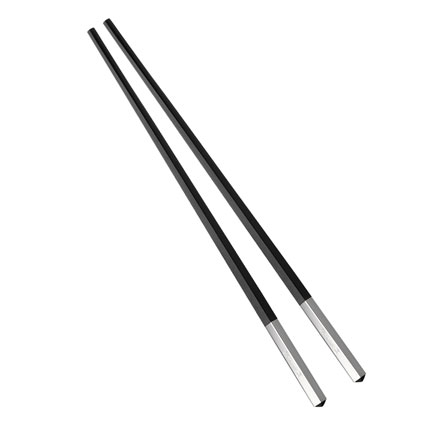
The Japanese style of chopsticks are rounded and tapered to a point at the end. They are usually also slightly shorter (although in Christofle’s case, they are all 9.5 inches). The smaller size and ends makes them better for more experienced chopstick users, as they are generally considered more difficult to use. They are ideal for picking up small pieces of food such as sushi, sashimi or rolls, while Chinese chopsticks are better suited for serving larger portions of food from a serving bowl to one’s plate.
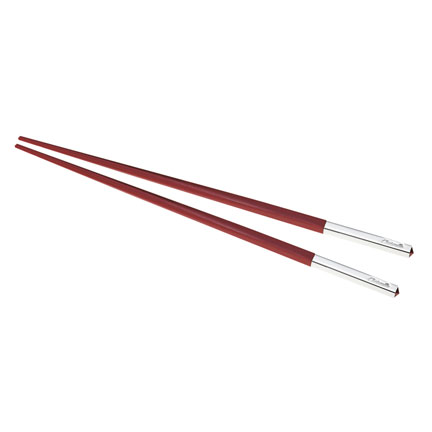
Whichever style you choose, a chopstick rest will provide an elegant place for diners to place their chopsticks when not in use – keeping your tablecloth clean and ensuring that your guests don’t need to leave the chopsticks standing up in their bowls (which is considered poor chopstick etiquette.)
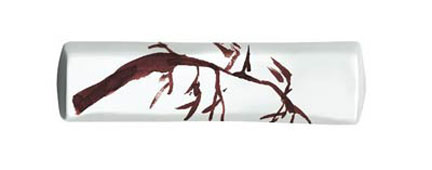
Chopsticks are an elegant and traditional way to enjoy Asian cuisines. They are both useful and beautiful, a winning combination for entertaining.



